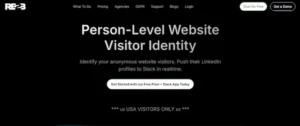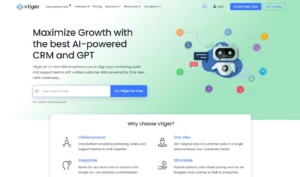The Definitive Guide to Increasing Click Rates in Email Marketing

If you’re looking to increase your click rate and improve your email marketing results, here are some tips to help you get started.
What Is The Email Click-Through Rate?
Email click-through rate (CTR) is a metric used in email marketing that measures the number of clicks a link receives in an email message. It is calculated by dividing the number of clicks by the number of delivered emails and then multiplying by 100 to get a percentage.
For example, if 1000 emails are delivered, and 100 recipients click on a link in the email, the click-through rate would be 10% (100/1000 x 100).
Email click-through rates are an important measure of the effectiveness of an email campaign, as they indicate the level of engagement and interest among recipients.
A high click-through rate generally indicates that the email content was relevant and compelling to the audience. In contrast, a low click-through rate may suggest that the email did not resonate with the recipients or that it was not properly targeted.
What Is The Average Click-Through Rate?
The average click-through rate (CTR) can vary depending on the industry, audience, and type of email being sent. However, according to recent industry reports, the average email click-through rate across all industries is around 2-3%.
It’s important to note that while this is a general benchmark, the specific click-through rate for an individual email campaign will depend on various factors, including the quality and relevance of the content, the email design, the audience, and the timing of the email.
Additionally, it’s important to compare the click-through rate of your email campaign to your own previous campaigns rather than solely relying on industry averages. By monitoring your own campaign metrics and making adjustments based on the results, you can improve your click-through rates over time and achieve better results.
How Do Click-Through Rates Compare By Device?
Click-through rates (CTR) can vary significantly by device, as users may interact with emails differently depending on whether they are using a desktop, mobile, or tablet device. Here’s a breakdown of how click-through rates compare by device:
- Desktop: Desktop users generally have larger screens and are more likely to view emails in full-screen mode, which can make it easier to navigate and click on links. According to some reports, desktop click-through rates tend to be higher than mobile or tablet rates, with an average CTR of around 3-4%.
- Mobile: Mobile devices are becoming increasingly popular for email consumption, with many users checking their emails on the go. However, mobile devices have smaller screens, which can make it more difficult to click on links. As a result, mobile CTRs tend to be lower than desktop rates, with an average CTR of around 1-2%.
- Tablet: Tablet users fall somewhere between desktop and mobile users in terms of click-through rates. Tablets have larger screens than mobile phones, which can make it easier to click on links. However, tablet users may be more likely to consume email content in a more leisurely manner, which can result in lower click-through rates. The average tablet CTR is around 2-3%.
It’s important to keep in mind that these are just general benchmarks, and your specific click-through rates may vary depending on your audience and email content. To optimise your click-through rates, you should ensure that your email content is mobile-responsive and easy to read on all devices and that your links are prominently displayed and easy to click.
What Day Should I Send My Email Campaign?
The best day to send your email campaign depends on your specific audience and the goals of your campaign. However, here are some general guidelines based on industry research and best practices:
- Tuesday, Wednesday, and Thursday: These are typically the best days to send email campaigns, as they tend to have higher open and click-through rates. Many people are more likely to check their emails during the middle of the workweek when they are less busy and more likely to have time to engage with email content.
- Avoid weekends: While it might be tempting to send emails on weekends when people have more free time, weekends tend to have lower open and click-through rates. Many people are less likely to check their emails on weekends and may be more focused on leisure activities.
- Avoid Mondays and Fridays: Mondays and Fridays can be tricky to send emails, as people may be more focused on catching up on work or planning for the weekend. However, it’s important to test different send times and days to see what works best for your specific audience.
Ultimately, the best day to send your email campaign depends on your audience and the goals of your campaign. You may need to experiment with different send times and days to find the optimal schedule for your audience. It’s also important to ensure your email content is relevant and valuable to your audience, regardless of when you send it.
How To Increase Email Click-Through Rates
There are several strategies you can use to increase email click-through rates and improve the effectiveness of your email campaigns:
- Optimise your subject lines: Your subject line is the first thing your recipients see and can have a big impact on whether they open your email. Ensure your subject lines are clear, concise, and compelling, and include relevant keywords that will entice your audience to click.
- Personalise your content: Personalization can help make your email content more relevant and engaging to your audience. Use segmentation and personalisation tools to tailor your emails to specific audience segments based on their interests, behaviour, and demographics.
- Use a clear call to action (CTA): Your CTA is the main action you want your recipients to take, such as clicking through to your website or purchasing. Make sure your CTA is clear, prominent, and easy to click, and use persuasive language to encourage your audience to take action.
- Test and optimise your email content: Testing different variations of your email content, such as subject lines, images, and CTAs, can help you identify what resonates best with your audience. Use A/B testing and other tools to experiment with different content and optimise your emails for maximum click-through rates.
- Ensure mobile responsiveness: With more and more people reading emails on their mobile devices, it’s essential that your email content is optimised for mobile. Ensure your emails are mobile-responsive and easy to read on all devices, with clear and easy-to-click CTAs.
- Build a strong sender reputation: Your sender reputation can impact how your emails are delivered and received by your audience. Ensure you’re sending relevant and valuable content, and follow email best practices to avoid spam filters and maintain a positive sender reputation.
By implementing these strategies and continuously testing and optimising your email campaigns, you can increase your click-through rates and achieve better results from your email marketing efforts.
Conclusion
In conclusion, increasing the click rate in email marketing is not as hard as you think. Follow these simple tips, and you will be on your way to higher engagement rates. Finally, remember to test and measure your results to ensure you are driving the results you want!
FAQs
What constitutes a desirable email marketing click rate?
Depending on the sector you’re in, a respectable click-through rate should be between 2 and 5 percent.
Why does my email’s click-through rate seem so low?
Your emails’ low click-through rates can result from the time you send them. To determine when to send messages, try different times to see when clicks are most prevalent.
Is a click-through rate of 7% acceptable?
For search advertisements like Google advertisements, a good click-through rate is between 6 and 7 percent, according to our benchmark statistics. Although not fixed in stone, this amount is a good place to start. Additionally, as you develop your campaign management skills, you should pay greater attention to return on investment.






